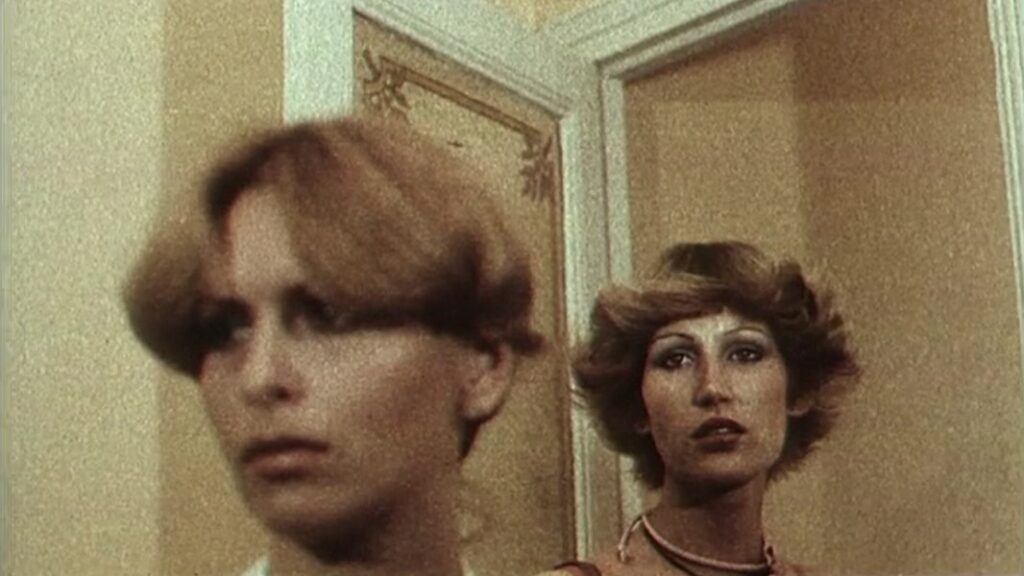
Colloque de chiens (1977) is an experimental short film by the late Raúl Ruiz shot (by Denis Lenoir) shortly after the filmmaker’s move to France from Chile following Augusto Pinochet’s rise to power. Colloque de chiens is a film as indebted to the photo-novels that were so popular in Chile as it is a deconstruction of melodramatic motifs. Ruiz’s approach is scathing and ironic as he charts the cycles of abuse within romantic relationships and visually compares them to leashed dogs.
The plot of Colloque de chiens is macabre, melodramatic and altogether grotesque. The film follows Monique (Silke Humel) from her childhood as an orphan to her work as a prostitute and then to her untimely suicide that also claims the life of her son. Monique’s rise and fall comes in the form of her husband Henri (Eva Simonet) who at first gives her the ideal middle class existence only to shatter that illusion with affairs and manipulations. After Monique dies, Henri kills his lover and becomes Odile. As Odile, she essentially closes the circuit by molding her new life in the image of Monique’s until she too is murdered.
Colloque de chiens is a film of sordid narrative cycles obsessed with causality. Although the circuity of continuity is a central aesthetic theme of Colloque de chiens the film itself, in form, is told almost exclusively with still images à la the photo-novel. The characters have no motion, trapped in still pictures just as they are trapped by their desires and class. In these cells continuity is, in the heat of violence, interrupted and intruded upon by a surreal dream logic. A bottle wielded against a woman becomes a knife between cuts only to become a glass and then a bottle again. The reality of the photo-document that is a single shot of the film is a document of unreality.
These long sections of parceled out melodrama are bookended by the moving images of dogs tethered to posts, trees, and fences. The dogs are helpless prisoners who have but one recourse and that is too bark. This adds a thematic layer to Ruiz’s La Jetée (1962) homage that concerns social commentary rather than a meditation on the nature of memory. Ruiz and Chris Marker both doubt the image as an objective document, but only Ruiz sees that doubt as the human extension of the dogs’ bark.
Colloque de chiens sees the futility of the single image as primary source and likens it to bourgeois ennui. This gives the tragedy of Colloque de chiens a darkly comic edge akin to the latter melodramas of Rainer Werner Fassbinder. For Ruiz it is the entire circuit of narrative that holds objective truth which encompasses the entire image complex and soundtrack. Fassbinder thought of his tragedies linearly; Marker perceived plot as a flat plane; Ruiz sees cinematic narrative as cyclical and only suceptible to change via a variation in the telling (narration).
